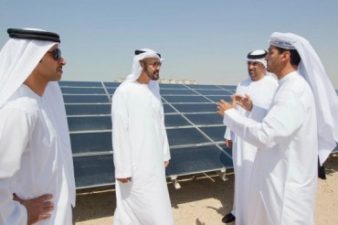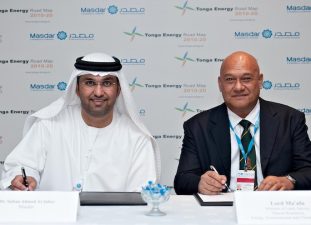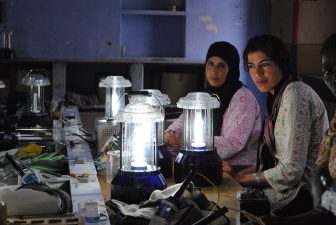 Libya has long relied on its crude oil resources for revenue, but the country possesses a natural resource far more abundant and hardly tapped at all: sun. Nearly 90 percent of the country is comprised of sun-drenched desert or semi desert and only 1.03 percent of the land is arable. Match this with solar irradiation that far north countries would die for, and Libya is sitting on a veritable gold mine.
Libya has long relied on its crude oil resources for revenue, but the country possesses a natural resource far more abundant and hardly tapped at all: sun. Nearly 90 percent of the country is comprised of sun-drenched desert or semi desert and only 1.03 percent of the land is arable. Match this with solar irradiation that far north countries would die for, and Libya is sitting on a veritable gold mine.
In a recent article published in the journal Renewable Energy, researchers estimate that while Libya currently produces approximately 1.4 million barrels of crude oil a day, covering just 0.1 percent of Libya with solar panels could produce the energy equivalent of seven million gallons of crude oil. But that is easier said than done.
Solar powerhouse
With an average daily solar radiation rate of about 7.1 kilowatt hours per square meter per day (kWh/m²/day) along the coast and 8.1kWh/m²/day in desert interior, Libya could be a serious solar powerhouse.
But its former despotic regime and recent political instability has resulted in a complete lack of transparency that is unfavorable to meaningful change.
That combined with fuel subsidies that make it hard to wean the country off fossil fuels and a general lack of knowledge and skilled workers familiar with alternative energy, has created major barriers to the serious implementation of the kind of large scale renewable energy projects that could free Libya from its addiction to oil.
But there is hope for the country, which has a long Mediterranean coastline.
Libya and DESERTEC
Bordered by other nations that have joined the growing DESERTEC initiative, including Tunisia, Libya too has taken tentative steps towards creating a base for renewable energy implementation with the long term goal of exporting power to Europe.
“A first positive step towards renewable energy was the establishment of the Renewable Energy Authority of Libya (REAOL), which created a renewable energy roadmap up to 2030. The target is to have a 30% renewable energy share of the total eletricty production by 2030,” according to the DESERTEC Knowledge Platform.
DESERTEC adds that “REAOL has prepared a mid-term plan (2008-2012) to promote renewable energy and to meet the targets presented in the table ‘Renewable energy targets.'”
“The Plan addresses projects in solar and wind and the possibilities of stimulating local manufacture of equipment for renewable energy.”
Some of the solar energy plans include:
- 5-10 MW PV plants connected to the Aljofra, Green Mountain and Sabha grid
- Extending the use of PV technologies in remote areas (2 MW)
- 1000 roof top systems for residential areas (3 MW)
- Feasibility study for CSP plant in unspecified location (100 MW)
- Developing a joint venture with local and foreign investors for the manufacture of solar water heaters for the local and export markets (40,000 units / year) and assembly of PV systems (50 MW)
The Renewable Energy Journal report also lauds the country’s wind power potential, particularly along the coast where the wind gusts for sustained periods year-round. REAOL had previously expressed a plan to generate a total of 1GW of wind energy in the short term, though it is uncertain how successful they have been.
Image of Libyan oasis in the desert, Shutterstock




stuffed animals are very cute and lovely, i bet that most kids and even women loves them`